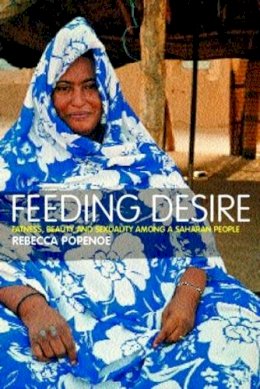
Feeding Desire: Fatness, Beauty and Sexuality Among a Saharan People
Rebecca Popenoe
While the Western world adheres to a beauty ideal that says women can never be too thin, the semi-nomadic Moors of the Sahara desert have for centuries cherished a feminine ideal of extreme fatness. Voluptuous immobility is thought to beautify girls' bodies, hasten the onset of puberty, heighten their sexuality and ripen them for marriage. From the time of the loss of their first milk teeth, girls are directed to eat huge bowls of milk and porridge in one of the world's few examples of active female fattening. Based on fieldwork in an Arab village in Niger, Feeding Desire analyses the meanings of women's fatness as constituted by desire, kinship, concepts of health, Islam, and the crucial social need to manage sexuality. By demonstrating how a particular beauty ideal can only be understood within wider social structures and cultural logics, the book also implicitly provides a new way of thinking about the ideal of slimness in late Western capitalism. Offering a reminder that an estimated eighty per cent of the world's societies prefer plump women, this gracefully written book is both a fascinating exploration of the nature of bodily ideals and a highly readable ethnography of a Saharan people.
Product Details
About Rebecca Popenoe
Reviews for Feeding Desire: Fatness, Beauty and Sexuality Among a Saharan People
